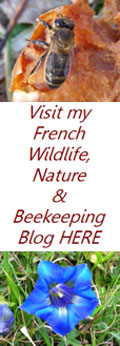

Introduced and
Invasive species in
(From an article 2016)
I would imagine that everyone is aware to some extent or another of the
issues surrounding species that are not native to
The issue isn’t a particularly new one and the
first species that started to be moved around the world by humans can be
traced back certainly to the Romans and in France we have an example of this
in the Edible Dormouse, (Glis glis or Loir as some will know them), that the
Romans brought to France to keep for eating. The
Romans also brought us the forerunner of the domestic cat which they valued
for controlling rodents in grain stores. Later in the 12th century the
Saracens brought the Genet with them to
What I would like to do is divert your attention for a moment to what is called the 6th great extinction or Holocene extinction where here at least there is general agreement that the issue of introduced species is and has been playing a significant role, however once again there is no general agreement on when the 6th Great extinction began although most consider it to be closely connected with human activity and certainly with the start of settled agriculture some 10,000 years ago in what is now central and south eastern Turkey. In fact the IUCN, (International Union for Conservation of Nature), the worlds recognised body in this field puts introduced species in second place to habitat loss as the two greatest causes of species extinction. Of course habitat loss includes every form of destruction or modification of our environment that is detrimental to other species. One more point to make here is that the last 150 years have seen the greatest number of non native species introduced by humans around the world and it is still continuing at an accelerated rate and as we will see globalisation as a whole is bringing us more than just cheap products and plants for our gardens, it is changing the very nature and fabric of our environment.
If we start with the ponds, rivers, lakes and canals we find an almost unbelievable 30 plus species of fish alone that shouldn’t be here and anglers will be well aware of some of them, the Pumpkinseed (Lepomis gibbosus), a North American member of the sunfish family as well as the so called Pikeperch, (Sander lucioperca), and the European catfish, (Silurus glanis), the later both top predators.
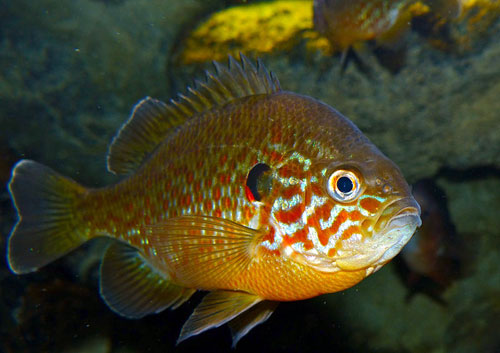
Pumpkinseed or Rainbow Perch (Lepomis gibbosu)
Goldfish everyone knows and these have been widely released into ponds and lakes often with disastrous consequences for some of our native amphibians that also suffer from the presence of the Red swamp crayfish, Procambarus clarkia, a particularly voracious predator that can cross land and survive in burrows when lakes are drained or ponds dry out.
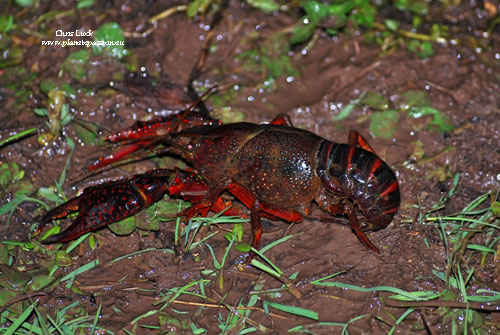
Red Swamp Crayfish
Another
species that has been widely released into ponds and canals is the red-eared
slider (Trachemys scripta elegans),
also known as the red-eared terrapin. It is a semiaquatic turtle belonging
to the family Emydidae and is
probably the most popular pet turtle in the world and is included in the
list of the world's 100 most invasive species published by the IUCN. As with
so many exotic pets people decide for one reason or another to release them
into the wild. Principally in
On the insect front few will be unaware of the
presence of the Asian Hornet that has spread more or less all over
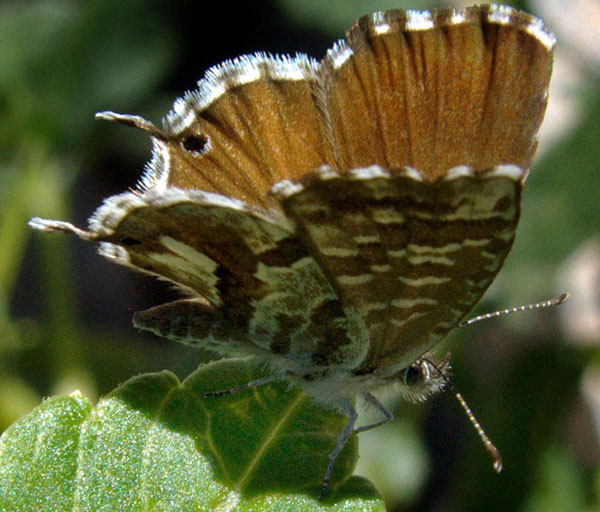
Geranium moth.
Another moth that is causing quite severe damage
where present is the Box moth,
Cydalima perspectalis, another Asian import that has spread rapidly
throughout much of Europe in 10 years and can devastate box hedges in no
time where there are large numbers present. The Grass-carrying wasp,
Isodontia mexicana, is a solitary wasp species with a completely
black body about 2cm long originally from the
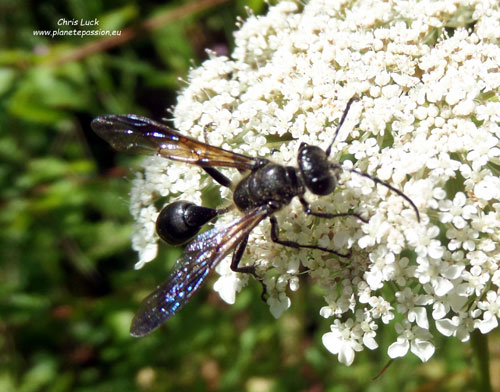
Grass-carrying wasp
Couldn’t leave insects without a mention of the
Harlequin ladybirds, Harmonia axyridis, the most invasive ladybird on earth, native to
Introduced mammals are well represented by Coypu or Ragondin as some will
know them, a species originally imported along with American Mink and Musk
rats for the fur industry.
Following escapes and deliberate releases
in the 1930’s when demand fell in the global depression they have all spread
to most regions of
When
it comes to plants Japanese knotweed,
Fallopia japonica, is by far the best known name even if a surprisingly
large number of people don’t recognise it when they see it. It’s an
attractive plant introduced to
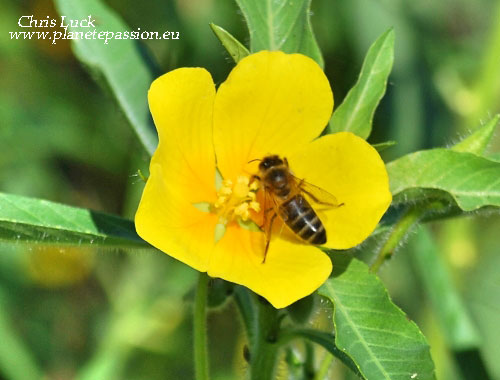
Above: Creeping water primrose with a honey bee and below coating the edges of the Vienne river.

These few examples show us that it’s clear that in almost all cases there is no putting the genie back in the bottle, from Asian Hornet to Coypu we have to accept that only the strong will survive and that our native species will either adapt or fail. Sadly the greatest impact, as is so often the case, would seem to be on our rivers, lakes and ponds and the species they contain these being the most difficult places to find the means to remove the “invaders”.

